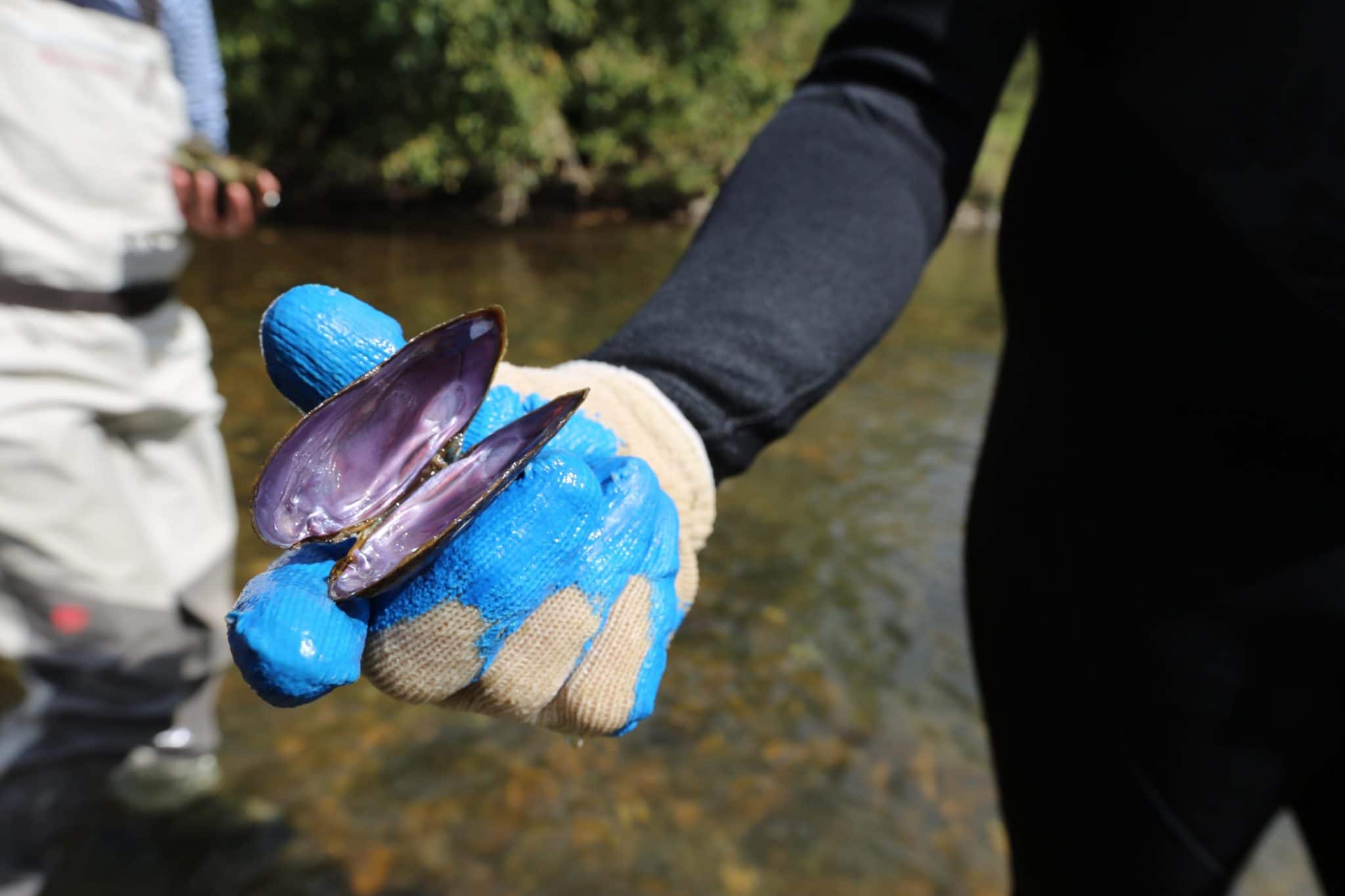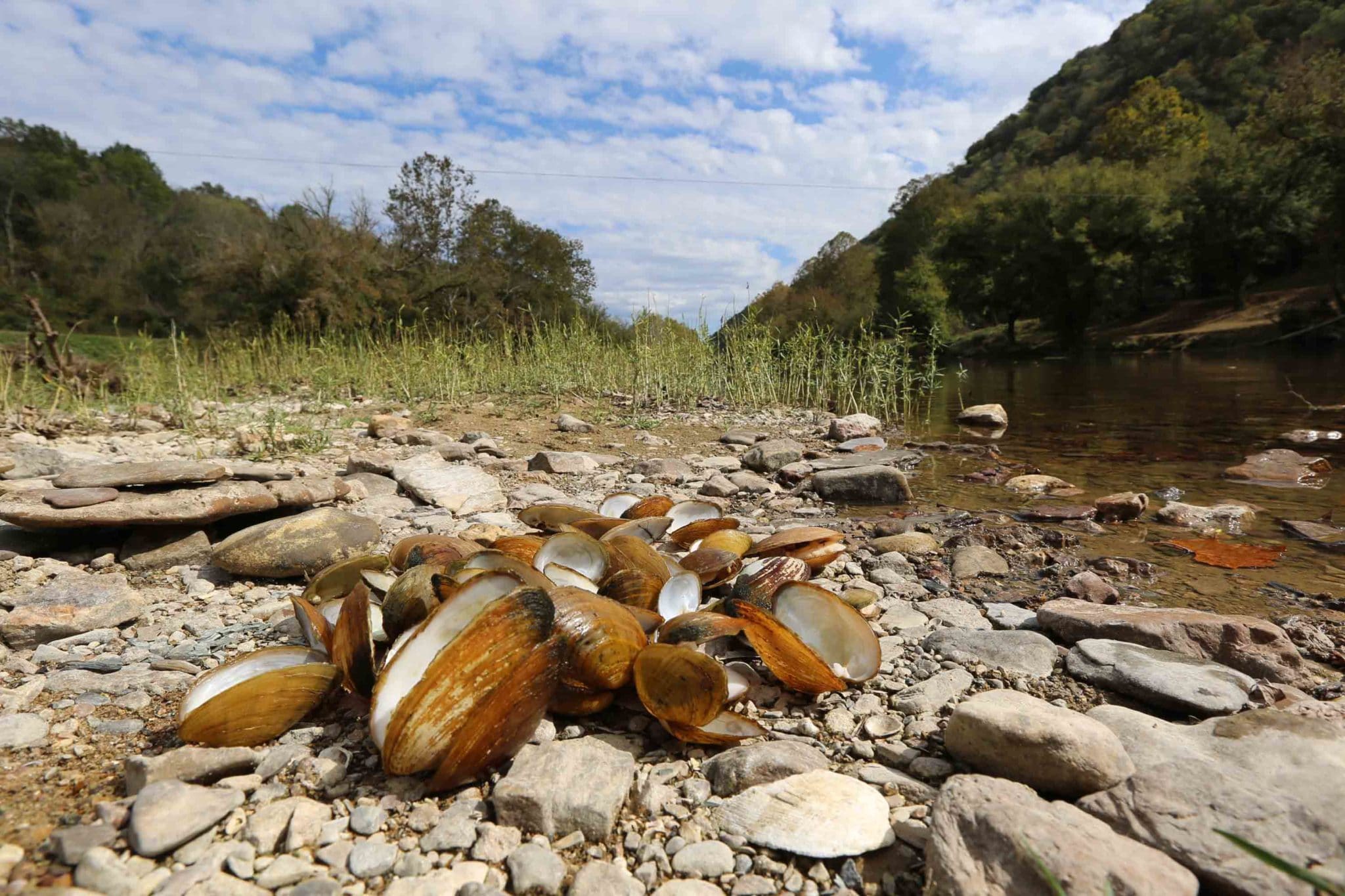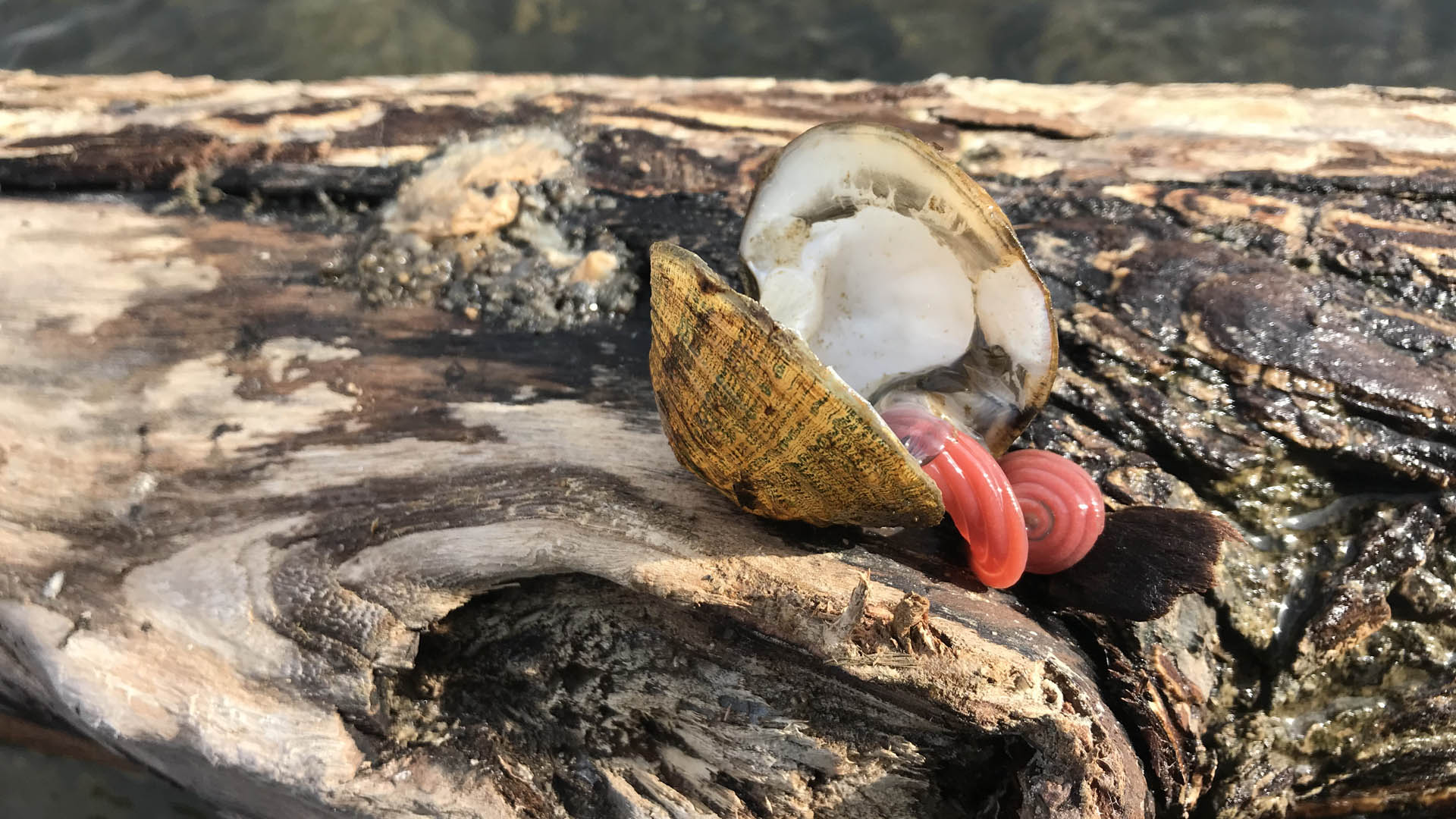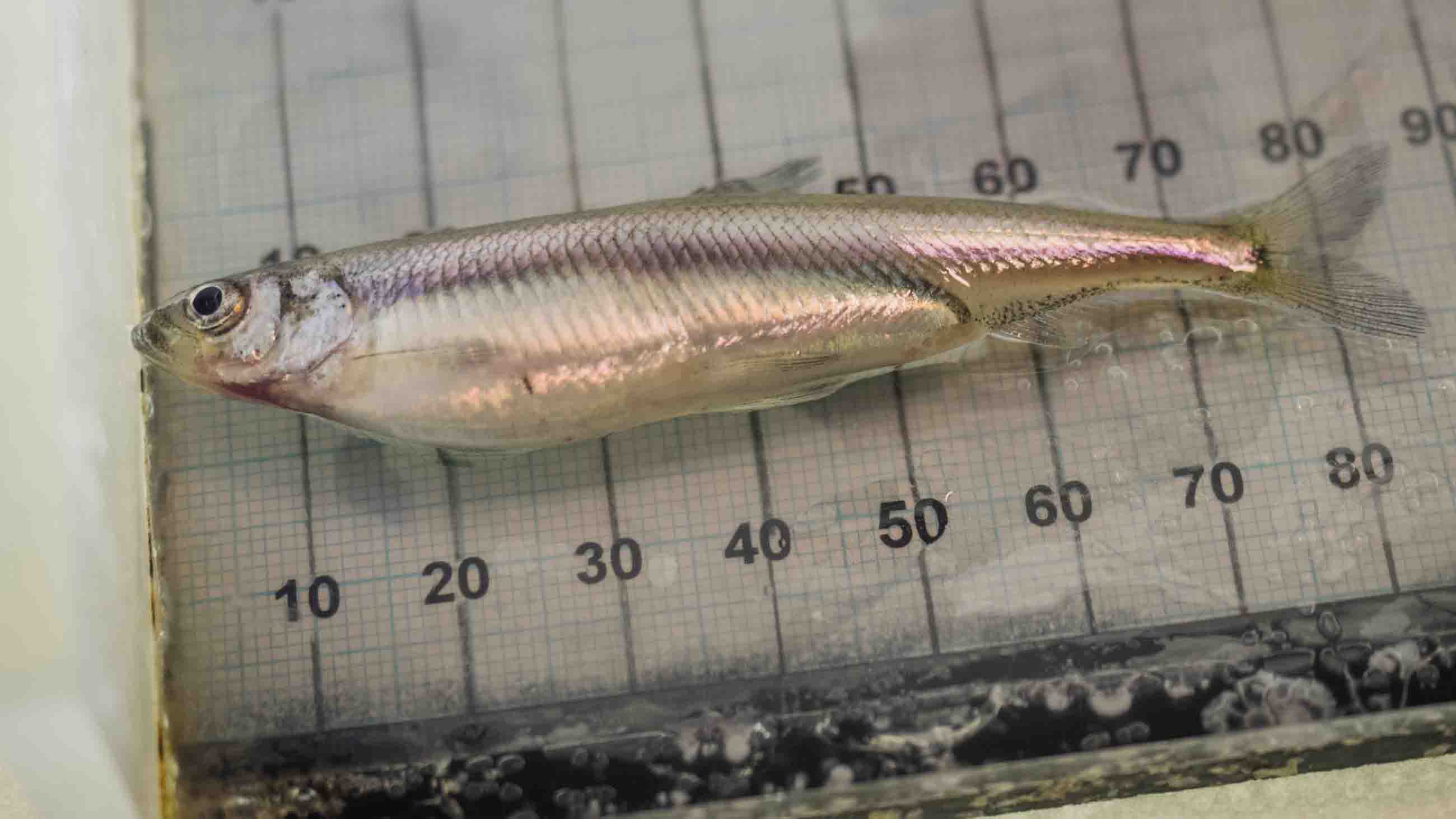The Mysterious Demise of Freshwater Mussels
Anthony Sasson knew something terrible had happened in Ohio’s Big Darby Creek.
Ordinarily, Big Darby cradles 44 of Ohio’s 60 or so species of freshwater mussels. But in October of 2016, Sasson, then a biologist at the Nature Conservancy, was one of the first people to notice mussels emerging from the safety of their usual burrows in the creek bed. The die-off was so extensive he could wade into the protected waterway, reach down, and collect a dead or dying mussel with every step. That fall, thousands of mussels — including two federally-endangered species — perished without warning or explanation.
At first, it looked like the result of a toxic spill — except all the fish and other aquatic life seemed fine. Early water and tissue analyses ruled out contaminants, algal toxins, parasites, bacteria, fungi, and other pathogens. “We really don’t know what’s happening,” a U.S. Fish and Wildlife Service employee said at the time. A month later, one of her colleagues expressed doubt they ever would. Biologists returned to document the die-off’s survivors, but even today they still don’t know the cause or the extent of the one-time event’s drastic toll. “It’s an enigma,” Sasson said.
In North America, home to one-third of the world’s freshwater mussel species, more than 70 percent of the mussels are imperiled or have been driven to extinction by pollution, habitat destruction, and other human-made hardships. But mass mussel casualties like those in Big Darby are relatively new, and they are happening worldwide. Around the same time as the Ohio incident, thousands of mussels were mysteriously perishing in Tennessee’s portion of the Clinch River, which runs through the Great Appalachian Valley. And over the last decade, similar die-offs from Washington to Wisconsin to Virginia — and overseas in Spain and Sweden — have perplexed biologists. “These are scary and disturbing,” said David Strayer, a retired freshwater ecologist formerly with the Cary Institute of Ecosystem Studies, an environmental research nonprofit in New York State. “Because we don’t really know what’s going on.”
On the case is the somewhat facetiously named Unionid Mussel Strike Force, a collaboration of two researchers at the University of Wisconsin-Madison and a half-dozen other scientists from a handful of federal agencies around the country. But in addition to trying to solve a mystery, the Strike Force is struggling against another obstacle long familiar to mussel specialists: apathy.
“It’s hard to rally around a living rock,” said Jeremy Tiemann, an aquatic ecologist with the Illinois Natural History Survey and president of the 550-member Freshwater Mollusk Conservation Society. Even though mussels are largely responsibly for filtering and cleaning freshwaters worldwide, it’s not easy to foster human compassion for them, added Jordan Richard, a U.S. Fish and Wildlife Service biologist and Strike Force member.
Still, in many of the country’s freshwater creeks and rivers, that foundation has been long crumbling. As early as 2004, Ohio ecologists began sounding alarms about declines in the richness of mussels in Big Darby Creek. The long decline, and the more recent decimations, could point to a broader ecological collapse. “I tell people freshwater mussels are not the charismatic megafauna,” the late Ohio State mollusk curator Tom Watters told Columbus Underground magazine in 2019. “They’re not cuddly or majestic or cute.” But mussels, Watters continued, “are the canaries in the coal mine.”
Freshwater mussels — distinct from the farmed saltwater varieties typically found on dinner plates — occupy the intersection of water and soil, making them precious to both aquatic and terrestrial ecosystems. As filter-feeders, mussels can digest bacteria like E. coli and other contaminants from the currents they bathe in, including the pharmaceuticals we flush down our toilets and the herbicides we apply to our lawns. What mussels ingest, they break down; some of it they release, and the rest they store as nutrients in their soft tissue and shells. These nutrients include carbon, which the mussels can sequester for the entirety of what is, at least for some species, a century-long life, making them at least a small player in mitigating climate change. In death, mussels still play a role in the ecosystem, feeding muskrats, raccoons, and other riverside vertebrates.
In some cases, humans have harnessed the shellfish’s ability to filter water. In 2019, for example, Pennsylvania invested $7.9 million in a mussel hatchery in Philadelphia aimed at improving water quality in the Delaware and Susquehanna watersheds, which together provide drinking water to more than 25 million people. In fact, most water bound for our reservoirs and faucets has probably passed through the interior of a freshwater mussel, according to veterinarian Abbie Gascho Landis’ 2017 book, “Immersion.” “They belong to both landscape and liquid,” she wrote. “As part of the river’s viscera — tucked among its bones — mussels are vital to the living river, and they cannot survive without it.”
Today, North America’s 300-or-so freshwater mussel species go by their common names, which range from the delicate — pheasantshells, finelined pocketbook, downy rainbow, and fragile papershell — to the rude — elephant-ear, monkeyface, heelsplitter, orangefoot pimpleback, and fuzzy pigtoe. They can be as small as a quarter or as large as a Frisbee, their shells as thin as a dime or as thick as a finger.

Regardless of size or species, every stage of a mussel’s life cycle reveals the precariousness of the animal’s conditions for survival. To feed, mussels demand water of a certain quality. To reproduce, they need a strong current to carry a flotilla of sperm to a potential mother. Most larval mussels are parasitic and hitch a ride to their future homes on fish, a feat only possible in healthy river ecosystems. Later, young mussels need an intact creek bed where they can mature into adults.
Mussels also don’t have much of a defense system and “they’re terrible at escaping,” Sasson said. The creatures are vulnerable to whatever gets dumped in waterways, he added, and they “are not really prepared to deal with modern insults.”
Freshwater mussels are even finicky in sickness and death. Monitoring a mussel’s health is near-impossible, said Tony Goldberg, a veterinary epidemiologist at the University of Wisconsin-Madison and a Strike Force member. Prying the shellfish open can be lethal. And there’s not much in the way of external symptoms to examine. Goldberg can’t easily draw a mussel’s blood or inquire about its diet, like he would do with a dog or cat. “You can’t listen to their heartbeat or take their temperature,” he said. “The best indicator that a mussel is sick is that it’s dead.”
In the United States, humans have driven a lot of mussels to death over the last century. Until the recent mysterious mass die-offs, scientists could explain much of freshwater mussels’ drawn-out decline dating back to the mid-19th century, when people realized they could yield pearls and their shells could be turned into iridescent buttons. By 1900, prospectors had rushed from the Northeast to Arkansas, Wisconsin, Louisiana, and Texas, depleting wild mussel populations along the way. (In a twist of fate, Johan Boepple, father of the U.S. mussel-shell button industry, stepped and cut his foot on a heelsplitter and died from an infection in 1912.)
Overexploitation and the rise of zippers and plastic fasteners brought the pearl button industry to its end in the early 20th century, but a new threat to mussels soon emerged. From the mid-1920s to the mid-1980s, dam construction across the U.S. impacted all but 2 percent of the country’s total stream length, Gascho Landis wrote. To date, most of the continent’s extinction of mussel species are directly attributable to dam-related habitat destruction. In one instance, a single dam on the Coosa River in Alabama drove six species of mussels out of existence.
One-time pollution episodes left further pockmarks in the nation’s mussel beds. In 1998, for example, an overturned tanker dumped 1,350 gallons of a rubber accelerant into an unnamed tributary of Virginia’s portion of the Clinch River. That morning, seven miles of its water turned milky with chemicals, killing some 18,000 mussels. Virginia’s game and fisheries agency considers the event “the most significant kill of endangered species in the history of the U.S. Endangered Species Act of 1973.”
By the 1980s North America’s mussels faced a new danger: invasive mollusks, which arrived from overseas and competed with native mussels for food and other resources. Around 1986, zebra mussels arrived through shipping into the Great Lakes and spread across the country, joining Asiatic clams, also known as Corbicula, which by then had already spread to D.C. and at least 37 states.
Michael Hoggarth, a biology and earth science professor at Otterbein University, has been doing mussel surveys in Ohio’s Little Miami River and its tributaries since 1990. By revisiting the same spots since then, he’s been able to track the disappearance of mussels from the river system over three decades. “It’s somewhat unique to document the decline,” said Hoggarth. At one site, for example, he initially recorded 90 live shells across 12 species; last year he found just 11 live ones representing half as many species. “We’ve lost almost all the mussels,” he said.
Other researchers have also recorded a nationwide deterioration of freshwater mussel populations over the last half-century, from the Embarras River in Illinois to the Conasauga River in Georgia. One of them, Wendell Haag, a scientist for the U.S. Forest Service in Frankfort, Kentucky, also wrote the textbook on North America’s freshwater mussels. “I say I got into mussels at the right time, because I got to watch them all die,” he said. “It’s depressing.” The line between historic declines and modern die-offs is fuzzy, Haag said, since the death of a mussel almost always goes unwitnessed.
“These impacts are slow and insidious, and they’re cumulative,” Hoggarth said. “If mussels are dying, they are a harbinger of what’s happening to that water. If you have dead mussels — or no mussels at all — that’s not a good sign.”
The Unionid Mussel Strike Force is a team of experts prepared to pounce on the next investigation, wherever it might take place (unionid refers to a family of freshwater mussels common in the U.S.). Based in Wisconsin, its core group of scientists stand ready to store and analyze samples fed to them by a nationwide network of biologists as die-offs crop up. “It’s not like they’re happening all over, all the time,” Richard said. “It’s not reasonable to have people at the ready in every state.”
In 2016, when Richard was just settling into his first post-grad job as a Fish and Wildlife Service biologist in the Southeast, the Strike Force had yet to assemble. But soon it would have a reason to form. Within days of Richard’s start date, he got word mussels were dying in droves along the Clinch River in Virginia, nicknamed the “Appalachian Amazon” for its freshwater biodiversity.
Unlike Big Darby’s one-time catastrophe, Clinch’s mass mussel deaths would repeat themselves year after year — which means the first five years of Richard’s career have felt like a race against the next year’s die-off. “I’ve been spending the majority of my time and energy and life figuring out what’s going on,” he said. “You don’t get used to it. It sucks every time you see it.”
The following fall, and each one since, Richard and his colleagues fell into a routine. They’d collect hundreds of mussel samples and scramble to get them onto a cargo plane that leaves at 8 p.m. sharp for an overnight flight from Tennessee to Wisconsin. At the other end, veterinary epidemiologist Tony Goldberg and the newly formed Strike Force waited.
While fungal, bacterial, and viral diseases have been documented for other aquatic invertebrates such as crayfish, oysters, and sea stars, potential freshwater mussel pathogens have only become a recent focus of scientific investigation. Goldberg, who has studied infectious disease in polar bears, primates, and penguins, suspects mussels could be suffering from their own version of the white-nose syndrome threatening North American bat populations or the Tasmanian devil facial tumor disease first observed in the 1990s.

In 2019, members of the Strike Force compared healthy Wisconsin mussels from the upper Mississippi to dead pheasantshells from the Clinch River. Using pliers and child-sized nasal speculums, they pried opened the shells and withdrew a few drops of a bloodlike fluid called hemolymph, which furnishes about half the mussel’s tissue weight and is circulated by a two-chambered heart wrapped around the anus. After incubating the samples, the scientists discovered 42 percent of the pheasantshells contained the bacterium Yokenella regensburgei, a very rare and poorly understood pathogen found in humans as well, and the same pathogen a separate team also documented in mussels during the peak of a recurring Alabama die-off. When the Strike Force analyzed samples from the Clinch River a few months after the die-off, the Y. regensburgei strains had disappeared.
This is not the only research effort to point to bacteria in mussels sampled from a Clinch die-off. In an independent study of pheasantshells collected during in 2016, Virginia biologists noted an unidentified streptococci-like bacteria in one specimen. And the team discovered parasites had infested nine of the 10 samples and found lesions in the mussels’ gills, digestive glands, and kidneys.
The mussels may be suffering from other germs, too. Last year, Goldberg and his colleagues reported the first known virus found in wild North American freshwater mussels, which they discovered by examining Wabash pigtoes from the Upper Mississippi River basin. They’ve also found viral genetic material in samples taken from a die-off site on the Chehalis River in Washington. (Prior to Goldberg’s discovery, scientists had only documented one freshwater mussel virus: the Lea plague virus that has infected triangle shell mussels cultivated at high density for freshwater pearl production in China.) And there may be more. “We’re in the middle of this,” Goldberg said. “But I can assure you we’re finding many, many undescribed viruses in freshwater mussels.”
Still, the Strike Force’s various projects have yet to point to a clear culprit, Goldberg said. What they have done is implicate several possible suspects. “Our task is to figure out which one of those matters,” he added. The overall strategy, Richard said, is to take advantage of the Clinch’s recurring events to answer questions raised by it and the other die-offs scattered from Oregon to Europe. “It’s such a black box,” he said. “But if there’s ever a place where we’re going to find an answer, it’s Clinch.”
Although the Covid-19 pandemic has put many scientific field research projects in limbo, the Strike Force hopes to focus its attention this year on mussel deaths in Europe — Sweden in particular — and the Pacific Northwest, where at least 16 die-offs or suspected die-offs have been documented in since 1984.
As part of that effort, biologist Emilie Blevins will drive this summer to six spots along the Chehalis River, a 115-mile scythe-shaped river located about halfway between Seattle and Portland, to gather samples. Blevins, who works for the invertebrate-focused conservation group Xerces Society, will don a snorkel mask and a wetsuit — or even better, she hopes, a dry suit, so she can wear a fleece onesie underneath. Then, she will fix her gaze past the creek’s many flitting aquatic inhabitants, toward the bottom, and seek mussels, which at first glance resemble small stones. Even though they can be partially covered in sand or silt, Blevins said of the mussels, “once you get the eye for it, they pop out at you.”
But before any of that happens, she has to take the first, worst step of surveying: approaching the site without knowing whether the mussels will be alive, dying, or dead. “You can show up too late,” Blevins said. “You can’t anticipate it. It’s disturbing. I’ve had a nightmare of dead mussels.” A graduate student once recorded 739 live mussels at a single site in the Chehalis; when volunteers surveyed the spot in 2018, they found 69. Further south, The Xerces Society has also collected samples from the Crooked River in Oregon, where about 4,000 mussels are estimated to have died in the last 15 years. When researchers examined western pearlshell mussels in Upper Bear Creek in Washington in 2007, about 100 miles from the Chehalis, they found an apparently stable population had crashed over the course of a decade, and noted empty shells dominated once-healthy sites. “It’s not this slow disappearance of mussels,” Blevins said. “We’re witnessing them dying.”
How many mussels Blevins is able to spot along the bottom of the Chehalis this summer will help determine whether the Pacific Northwest’s populations are still crashing. And she hopes the samples will offer up clues for the Strike Force. Last year, for example, the Wisconsin lab found an unidentifiable virus in tissue and hemolymph taken from the Chehalis mussels. “It’s a riddle that everyone wants to solve,” Blevins said.
That’s just one of many leads the Strike Force plans to follow this year. It will continue to investigate mussel microbiomes to understand which internal bacteria and parasites are normal, and which might not be. The team will continue to isolate and investigate viruses. Richard will also “dig past in time,” he said, and work through a stockpile of hundreds of samples preserved in a giant freezer in the lab’s basement. And plans are in motion to set up a biosecure facility this summer where they can run experimental trials and test the effects of possible culprits in a controlled setting. “There’s not really one way to handle this,” Richard said. “We’re putting our heads together.”
The collaboration met in March — just before widespread coronavirus lockdowns went into effect — to establish the framework for a master database of what they’ve collected so far to see if a broader picture emerges.
“I don’t know that we’re going to find a smoking gun,” said Diane Waller, a U.S. Geological Survey biologist based in La Crosse, Wisconsin, who coordinates the Strike Force. “There are a lot of things we have to tie together and we’re thick in the middle of it. But I am hopeful.”
Marion Renault is a science journalist born in France, bred in the Midwest, and now based in Brooklyn.












Comments are automatically closed one year after article publication. Archived comments are below.
first thing that came to mind were a few pictures from conspiracy theorists, chem trails. apparently in the US budget are chemicals that get delivered to air ports and never show up again in the records .google images chem trails , and search from there.